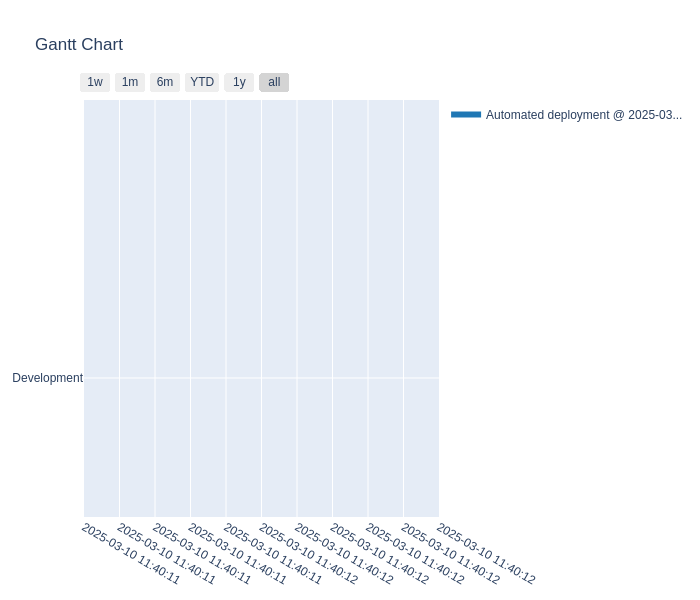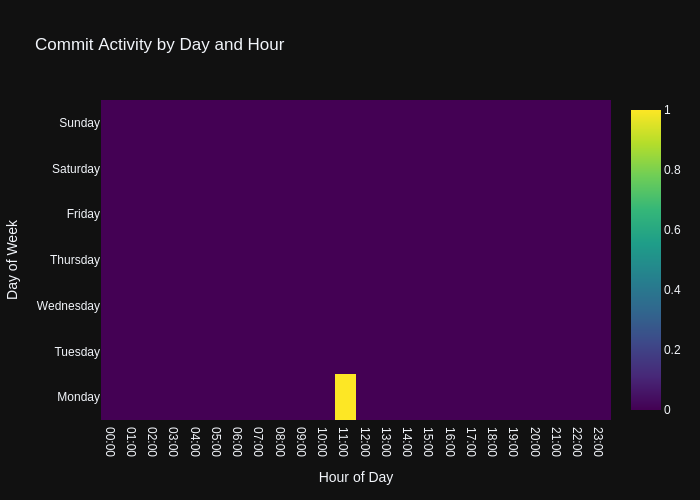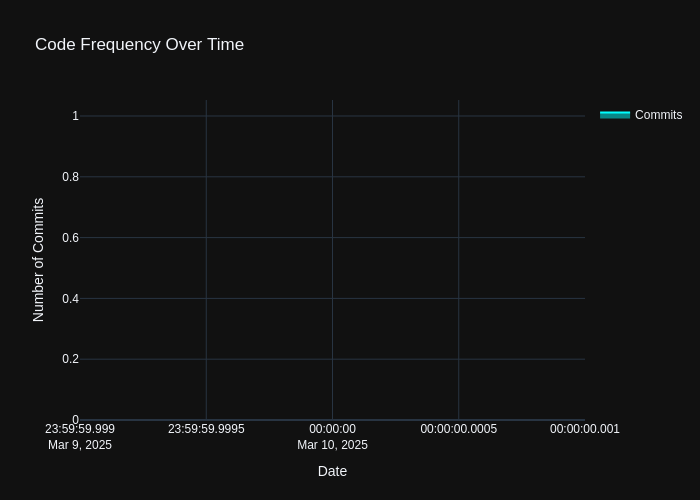Building Bigu-Website: Merging Tradition and Tech for Health Management
Project Genesis
Discovering Balance: The Journey Behind the Bigu Website HeyTCM
From Idea to Implementation
1. Initial Research and Planning
2. Technical Decisions and Their Rationale
3. Alternative Approaches Considered
4. Key Insights That Shaped the Project
Conclusion
Under the Hood
Technical Deep-Dive: 辟谷养生网站
1. Architecture Decisions
-
Microservices Architecture: The platform is built using a microservices architecture to allow for independent development, deployment, and scaling of different functionalities (e.g., user management, product catalog, community interactions). This approach enhances maintainability and allows teams to work on different services simultaneously.
-
API-First Design: An API-first approach was adopted to ensure that all functionalities are accessible via RESTful APIs. This allows for easy integration with mobile applications and third-party services, enhancing the platform’s reach and usability.
-
Data-Driven Personalization: The architecture includes a robust data layer that collects user interactions and preferences to provide personalized content. This is achieved through a combination of user profiles, activity logs, and machine learning algorithms that analyze user behavior.
-
Content Management System (CMS): A headless CMS is utilized to manage the knowledge base and community content. This allows for dynamic content delivery across different user interfaces while maintaining a single source of truth for content.
2. Key Technologies Used
-
Backend Framework: Node.js with Express.js was chosen for the backend due to its non-blocking I/O model, which is ideal for handling multiple requests simultaneously. This is particularly useful for real-time features like community interactions.
-
Database: MongoDB was selected as the primary database due to its flexibility in handling unstructured data, which is essential for user-generated content and diverse product information.
-
Frontend Framework: React.js was used for the frontend to create a dynamic and responsive user interface. Its component-based architecture allows for reusable UI components, which is beneficial for the modular design of the site.
-
Machine Learning: Python with libraries like Scikit-learn and TensorFlow is used for implementing personalized recommendations based on user behavior and preferences.
-
Cloud Services: AWS (Amazon Web Services) is utilized for hosting, storage, and database services, providing scalability and reliability.
3. Interesting Implementation Details
- Dynamic Homepage Adaptation: The homepage content is dynamically adjusted based on user-selected health goals. This is achieved through a combination of user profile data and a content management system that serves tailored modules. For example, the following code snippet demonstrates how the backend retrieves user preferences and serves the appropriate homepage content:
app.get('/homepage', async (req, res) => {
const userId = req.user.id;
const userPreferences = await UserPreferences.findOne({ userId });
let homepageContent;
switch (userPreferences.goal) {
case '调理身体':
homepageContent = await getBodyAdjustmentContent();
break;
case '减重塑形':
homepageContent = await getWeightLossContent();
break;
case '文化体验':
homepageContent = await getCulturalExperienceContent();
break;
case '健康探索':
homepageContent = await getHealthExplorationContent();
break;
default:
homepageContent = await getDefaultContent();
}
res.json(homepageContent);
});- User Engagement Features: The platform includes gamification elements such as badges and rewards for user achievements. The badge system is implemented using a simple state management approach in React:
const [badges, setBadges] = useState([]);
const unlockBadge = (badge) => {
setBadges((prevBadges) => [...prevBadges, badge]);
};
// Example of unlocking a badge
useEffect(() => {
if (userProgress === targetProgress) {
unlockBadge('平衡大师');
}
}, [userProgress]);4. Technical Challenges Overcome
-
Data Privacy and Security: Given the sensitive nature of health-related data, implementing robust security measures was a priority. The platform uses JWT (JSON Web Tokens) for secure user authentication and authorization. Additionally, data encryption is employed for sensitive user information.
-
Scalability: As user engagement grows, ensuring the platform can handle increased traffic was a challenge. Load balancing and horizontal scaling strategies were implemented using AWS Elastic Load Balancing and Auto Scaling groups to manage traffic effectively.
-
Content Moderation: Managing user-generated content in the community section posed challenges, particularly in filtering out inappropriate content. A dual-layer moderation system was implemented, combining AI-based content filtering with human review processes to ensure compliance with community guidelines.
-
Personalization Algorithms: Developing effective algorithms for personalized content recommendations required extensive data analysis and testing. The team utilized collaborative filtering and content-based filtering techniques to enhance the accuracy of recommendations, continuously refining the algorithms based on user feedback.
Conclusion
Lessons from the Trenches
Key Technical Lessons Learned
-
User-Centric Design: The importance of tailoring the user experience based on individual goals was paramount. Implementing dynamic content that adapts to user preferences significantly enhances engagement and satisfaction.
-
Data Visualization: Effective use of data visualization tools (like the “亚健康指数仪表盘”) is crucial for conveying complex health metrics in an easily digestible format. This not only aids user understanding but also encourages regular interaction with the platform.
-
Content Moderation: Establishing a robust content safety mechanism is essential. The dual-layered review process (AI initial screening followed by expert validation) proved effective in maintaining content integrity and user trust.
-
Accessibility Features: Incorporating multi-modal interactions (like voice reading and audio diaries) is vital for inclusivity. This approach not only caters to users with disabilities but also enhances the overall user experience.
What Worked Well
-
Modular Design: The modular approach allowed for flexibility in content delivery, enabling users to navigate easily between different health goals and resources. This structure facilitated a seamless user journey.
-
Community Engagement: The community features, such as topic-based groups and user-generated content, fostered a sense of belonging and support among users. This engagement was crucial for retention and user satisfaction.
-
Visual Identity: The differentiated visual language for various user groups (e.g., calming colors for health management vs. cultural aesthetics) effectively communicated the platform’s purpose and enhanced user experience.
-
Gamification Elements: The achievement system and badge rewards motivated users to engage more deeply with the platform, driving participation in challenges and community activities.
What You’d Do Differently
-
User Testing: Conducting more extensive user testing during the design phase could have provided deeper insights into user behavior and preferences, allowing for further refinements before launch.
-
Feedback Loops: Implementing a more structured feedback mechanism post-launch would help in continuously improving the platform based on real user experiences and suggestions.
-
Scalability Considerations: Planning for scalability from the outset, especially regarding community features and content moderation, would ensure smoother growth as user numbers increase.
-
Integration of AI: Exploring more advanced AI capabilities for personalized recommendations and content delivery could enhance user experience and engagement further.
Advice for Others
-
Prioritize User Research: Invest time in understanding your target audience’s needs and preferences. User personas and journey mapping can provide valuable insights that inform design decisions.
-
Iterative Design Process: Embrace an iterative design approach. Regularly test and refine your platform based on user feedback to ensure it meets evolving needs.
-
Focus on Accessibility: Ensure your platform is accessible to all users, including those with disabilities. This not only broadens your audience but also enhances overall user satisfaction.
-
Build a Strong Community: Foster a sense of community among users. Encourage interaction and support through forums, challenges, and shared experiences to enhance user retention and engagement.
-
Maintain Content Integrity: Establish clear guidelines and robust moderation processes to ensure the quality and safety of user-generated content. This builds trust and credibility for your platform.
What’s Next?
Conclusion for the Bigu Website HeyTCM
Project Development Analytics
timeline gant

Commit Activity Heatmap
Contributor Network

Commit Activity Patterns

Code Frequency

- Repository URL: https://github.com/wanghaisheng/bigu-website-heytcm
- Stars: 0
- Forks: 0
编辑整理: Heisenberg 更新日期:2025 年 3 月 17 日